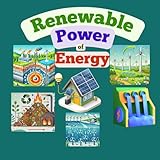
Sustainable Living for a More Sustainable Lifestyle
Sustainable Ways of Living in Our Homes
![]() Sustainability is about becoming more efficient in the way we use energy that will cause little or no damage to the environment and the planet’s natural resources. Sustainable living requires us to consider the impact of our life-style on the environment and how we live. So the best place to start thinking about living more sustainable is inside our own homes.
Sustainability is about becoming more efficient in the way we use energy that will cause little or no damage to the environment and the planet’s natural resources. Sustainable living requires us to consider the impact of our life-style on the environment and how we live. So the best place to start thinking about living more sustainable is inside our own homes.
Sustainable Living is an ongoing process which evolves over time as our changing life-style evolves. One of the biggest challenges of finding sustainable ways of living is in the reduction of our energy consumption produced by fossil fuels. For example, we could use electricity generated from non-renewable fossil fuel, or from cleaner photovoltaic solar energy as installing solar photovoltaic panels on your roof is just one way to make your home more sustainable.
Long before electricity was instantly available in our homes, man’s concern for sustainable living was driven by necessity rather than desirability. Today, new sustainable ideas and ways can exist side-by-side with the more traditional unsustainable ways of construction. For example, better insulation, energy efficiency, and smart home control systems now becoming part of the bricks and mortar construction for Sustainable Developments.

What Is Sustainable Living
Sustainable living refers to a lifestyle that seeks to reduce our impact on the environment by making more conscious and responsible choices in daily life.
Living sustainably is not an overnight transformation but a journey of learning, adapting, and making conscious choices about the various aspects of life such as fuel, transportation, food, housing, and energy consumption.
1. Energy Conservation and Renewable Energy:
Reducing energy consumption is a fundamental aspect of sustainable living. Begin by making simple changes such as turning off lights and electronic devices when not in use. Unplug chargers and power strips to avoid phantom energy consumption. Switch to energy-efficient appliances and LED bulbs to save electricity and money.
Consider investing in renewable energy sources like solar panels for your home. Solar energy is not only environmentally friendly but can also significantly reduce your dependence on non-renewable resources and lower your electricity bills over time. after all, Renewable Energy is a Sustainable Source.
2. Waste Reduction and Recycling:
One of the primary goals of sustainable living is to reduce our environmental footprint. To reduce waste, follow the three R’s of Reduce, Reuse, and Recycle. Start by being mindful of your purchasing habits. Reduce your spend by asking yourself if you really need to but that item. Choose products which have minimal packaging and are more durable, and long-lasting goods to reduce waste.
Reuse items whenever possible. Get creative and repurpose items for different uses. For example, glass jars can become storage containers, and old clothes can be turned into cleaning rags for the garage or garden.
Sustainable ways of living encourages the reduction of single-use plastics and the promotion of recycling. By opting for reusable water bottles, shopping bags, and containers, we can reduce the vast amount of plastic waste that ends up polluting our oceans and harming marine life.
Recycling is vital for materials that can be processed and reused to make new products. By reducing our carbon footprint, we can help to mitigate the impact of climate change and maintain a healthy planet for future generations.
3. Sustainable Transportation:
Transportation contributes significantly to carbon and CO2 emissions. Consider alternatives to driving alone, such as carpooling, using public transportation, or cycling. Walking and biking not only reduce your carbon footprint but also offers real health benefits by increasing your physical activity levels while reduce air pollution.
If possible, opt for an electric vehicle or a hybrid car. Electric vehicles produce zero tailpipe emissions and can be charged using renewable energy sources, making them a cleaner option for transportation.
4. Water Conservation:
Clean water is a precious resource, and conserving it is crucial for sustainable living. Fix any leaks in your home promptly. Install low-flow taps, faucets and shower heads to reduce water wastage. Collect rainwater for gardening or other non-potable purposes.
Be mindful of water usage in daily activities, such as washing dishes, doing laundry, and brushing teeth. Small changes in water usage can collectively make a significant impact on water conservation and preserve this natural resource.
5. Plant-Based Healthier Diet:
Sustainable living can lead to improved health benefits. Adopting a plant-based diet, or at least reducing meat consumption, has been linked to a lower risk of chronic diseases having a positive impact on the environment. Livestock agriculture is a significant source of greenhouse gas emissions, deforestation, and water pollution.
Explore vegetarian and vegan recipes, and incorporate more plant-based meals into your diet. Growing your own fruit and vegetables at home or supporting local farmers through farmers markets can lead to fresher and often more sustainably sourced produce can also contribute to a more environmentally friendly food system.
6. Be A Conscious Consumer:
Conscious consumerism is about deliberately making purchasing decisions that they believe have a positive social, economic, and environmental impact. Become a conscious consumer by supporting brands and businesses that prioritize sustainability, transparency, and ethical practices.
Look for third-party certifications of their products such as Fair Trade certification, (for ethically produced goods) or FSC certification, (to ensure responsibly managed forests) which indicate a commitment to social and environmental responsibility.
Choose products made from renewable or recycled materials. Invest in high-quality, durable items that will last longer, reducing the need for frequent replacements.
7. Embrace Nature:
Sustainable living isn’t just about modifying habits, it’s also about forming a deeper connection with the great outdoors and nature. Spend time outdoors, engage in outdoor activities, and appreciate the natural beauty around you. Spending more time outdoors and connecting with nature has been linked to reduced stress levels and increased happiness.
Get of the sofa and step outside your front door and see the beauty of nature around you. Open your eyes to what is going on around your local area and take time to embrace everything that you see. Once kids embrace nature and understand how everything is interconnected, they’re much more likely to be more passionate about protecting it.
Volunteering in local environmental initiatives and community clean-up events. Look for opportunities that align with your skills or interests. Join like-minded individuals in sustainable living efforts can provide support and motivation for your journey. Not only will you gain a deeper understanding of your local community, but you’ll also create long lasting friends.
Sustainable Living Summary
So, there we have it. 7 sustainable ways of living to balance economic, social, and environmental factors creating a healthy and equitable world which meets the needs of the present without compromising the ability of future generations to meet their own needs.
Overall, sustainable living is a necessary and positive approach to living that supports the well-being of all living beings and our planet. Remember, the earth’s resources are finite, and if we continue to consume them at the current rate, we will deplete them sooner than later while at the same time increasing greenhouse gas emissions contributing to climate change, which is causing severe environmental, economic, and social impacts globally.
As we have discussed. Sustainable living can benefit individuals and the planet in numerous ways. For individuals, it can lead to a healthier lifestyle, financial savings, and a sense of purpose and satisfaction. Sustainable living can reduce our environmental impact, promote biodiversity, and contribute to the mitigation of climate change. It can also create more resilient communities and provide economic opportunities in sustainable industries.
Living sustainably is not just a fleeting trend or an overnight transformation, it’s a journey of learning, adapting, and making conscious choices to create a positive impact on the environment and our lives. As beginners, it’s essential to start small and gradually build on them. Embracing sustainable living as well as sustainable ways of living is an empowering step towards creating a brighter future for the planet and ourselves. The key is to be mindful of our choices and their impact on the environment.
Remember, every small effort counts. Reduce, Reuse, and Recycle are just three small steps towards a greener future.
To learn more about how Sustainable Living can benefit individuals and the planet in numerous ways by reducing your impact on the environment making conscious and responsible choices in daily life. Or maybe you just want to explore how sustainable living can lead to significant financial savings in the long run by adopting energy-efficient practices. Then Click Here to get your copy of direct from Amazon today.











One additional tip to consider is the importance of replacing old HVAC systems with energy-efficient models. Older systems tend to be less efficient and consume more energy, resulting in higher utility bills and an increased environmental impact. If you’re unsure whether it’s time for a heating system replacement, you can find some signs indicating the need for one here: .
I appreciate the practical tips and guidance on energy conservation, waste reduction, sustainable transportation, and more. One aspect of sustainable living that I’d like to add, which wasn’t mentioned in the article, is the growing popularity of salt water pools. These pools are not only eco-friendly but also offer a more natural swimming experience. The use of salt instead of traditional chlorine reduces the need for harsh chemicals, making it a healthier option for both swimmers and the environment.
Great article! One more thing you can do to save energy is to take advantage of sunlight. On sunny days, open your curtains and blinds to let the natural sunlight warm up your home. This can help reduce the need for extra heating and lower your utility bills. Some more simple tips:
Certainly, conserving water is really important for our environment. In addition to the great suggestions mentioned, remember to check your water heater tank regularly and consider replacing it if it’s old and has the potential for water leaks. Here’s how to know when you need a water heater replacement:
To conserve even more energy, consider installing a new heating or cooling system for your home with an Energy Star label or a high SEER rating — these ones are more energy-efficient. Also, please remember to check the new SEER regulations for 2023: These changes are legally effective from January 1 this year.
Good tips! Having an HVAC system that suits your home size and your needs is also crucial. Picking the right HVAC system will help you save energy and keep your home cozy. Also, consider your climate — some systems (for example, heat pumps) work better in mild weather, while others are best for colder places.